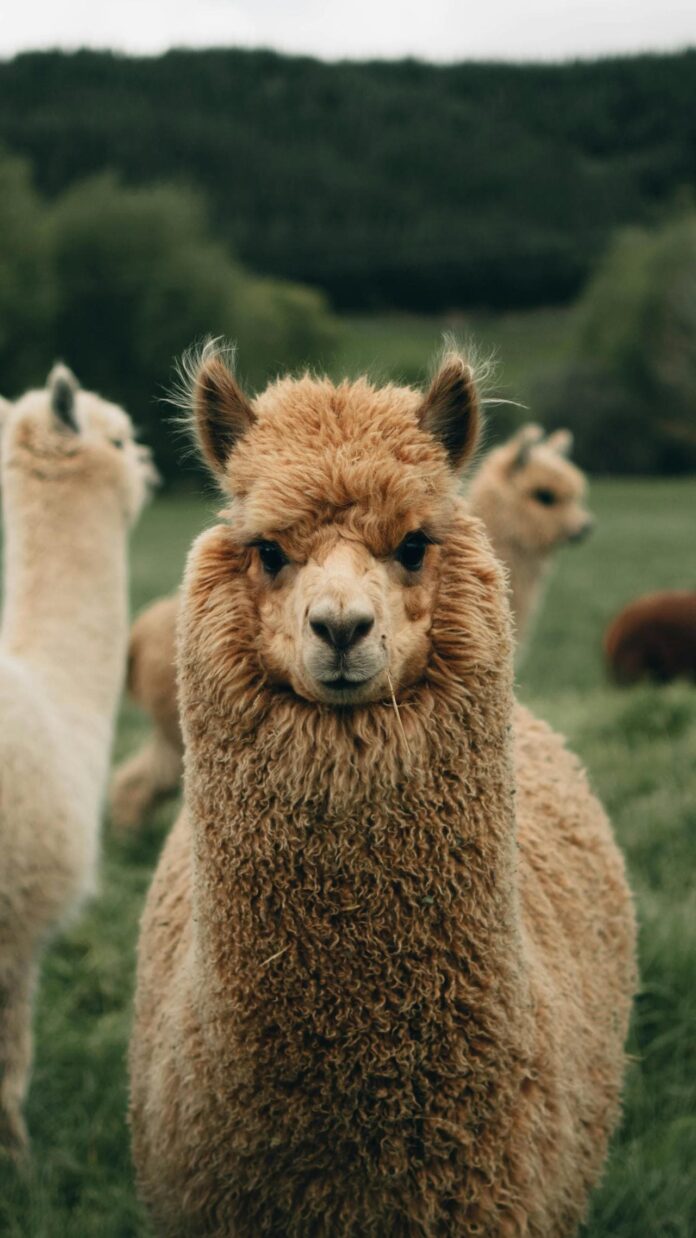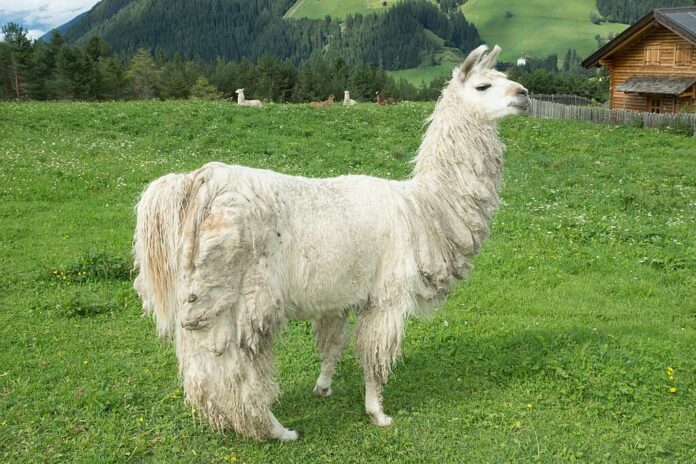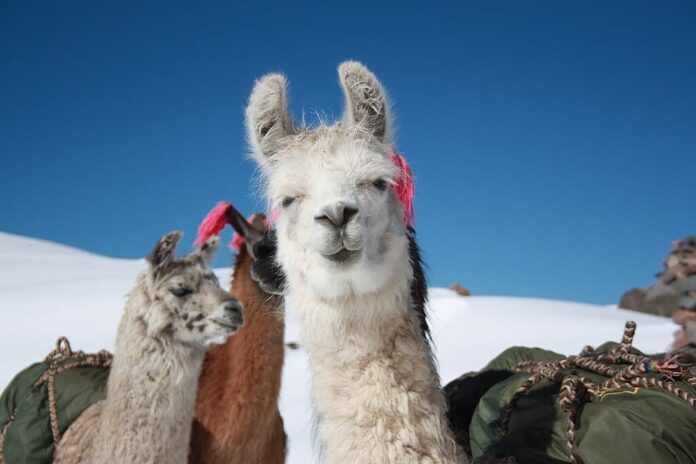Llama is one of the cutest animals that many people adore due to their fluffy appearance. Many of us probably have seen them at the farms or in videos, but llamas are more than just the look. Llamas actually offer a lot of benefits such as fur, rides, and even protectiveness to those who raise them. Looking cute and all, llamas are actually pretty strong with the ability to carry a lot of weight on their backs. You will find some details about llamas in our article below, so feel free to take a look.
1Appearance

Llamas come in a range of solid and spotted colors such as beige, black, brown, gray, red, and white. Both their outer coat and undercoat are helpful and useful for a number of reasons. Yarn made from llama fiber is lightweight and soft as well as remarkably warm. The soft undercoat is also ideal for garments and handicrafts while the coarse outer coats are great for ropes and rugs. The cool part is that llamas have large eyes that can look at different directions independently from one another. Those big eyes also allow them to see far distances which makes it easy for them to watch out for predators.
Generally, llamas grow as tall as 6 feet and weigh between 280 and 450 pounds. They have long banana-shaped ears and long faces with long slender legs. Llamas are very strong with the capability to carry up to 30% of their body weight on their backs. On top of that, llamas are able to walk while carrying loads on a trek of 12 miles without a problem. Although they are strong and tall, only children up to 80 pounds are suitable to ride them. The combination of their height and hardy build makes them very suitable for harsh environments. Thanks to their soft padded foot, llamas are also able to navigate rocky terrain at high altitudes with ease.
2Behavior

Llamas are very social animals, and they prefer to live with other llamas or herd animals. Even more interesting, llamas will also adopt a group of goats or sheep as their own herd. Surprisingly, llamas make excellent guards for herds of those small animals, and they will protect the whole herds as well. As protectors, they will chase off coyotes and other predators to keep every member safe. On top of that, they are able to distinguish between the neighbor’s dog and a predator. That also means they will not attack or chase off the wrong predators at all. In the group, llamas communicate by humming and they express agitation by kicking and neck-wrestling each other. If males decide to have a fight, they will start screaming at each other. Llamas also send alarm calls to warn the rest of the herd when they perceive dangers.
Being one of the smart animals, llamas possess personalities that make each of them unique in their own interesting ways. This is why having them on the farm is easy because llamas are very easy to train. One of the most common traits that llamas share with other members of the camelid family is spitting. Llamas will spit or stick their tongue out when they are annoyed, and this is something that many of us know. As pack animals, llamas know their own limits which is a very special thing. When a person tries to overload a llama with more than it can carry, it is likely to lie down. If not so, it simply refuses to move to let the owner that the items are too heavy for them. In worse cases, they may hiss, spit, or even kick their owners until their burden is lessened.
3Feeding & Habitat

As vegetarians, llamas feed on a wide range of plants and vegetation that they can find. Their daily food is grass and leaves, and they need only a little water to survive. Llamas do not destroy pasture when they graze since they trim the grass instead of pulling it up by the roots. This makes them dependable and sturdy in areas like mountainous terrains. They have very efficient digestive systems thanks to the three compartments in their stomach. Those compartments are abomasum, omasum, and rumen which allow them to regurgitate and re-chew their food for proper digestion. Llama poop has almost no odor, and it makes amazing eco-friendly fertilizers for farms and gardens.
These necky animals are native to South America, mostly in Bolivia, Chile, and Peru. The wild ones inhabit mountain terrains while the rest are domesticated in many areas around the world. Llamas are domestic animals that people of the Andes Mountains have been using as pack animals for centuries. Although they are able to obtain water from the food that they consume, llamas still need a source of fresh water. Their natural habitat is a high plateau covered with grasses, shrubs, and stunted trees but llamas are no longer found in the wild.
4Use

Llamas are domesticated and farmed for hundreds of years thanks to the benefits that they provide. These adorable animals can give meat, milk, and wool annually to their owners. Wools from llamas are hypoallergenic which is not only safe but also very comfortable to use. Just like we mentioned above, llamas are also ideal as pack animals to carry large loads on mountain terrains. Apart from those, their gentle and undemanding behaviors make them ideal for leisure activities on the farm as well.
Related Post: Things You Should Know About Marine Iguanas




